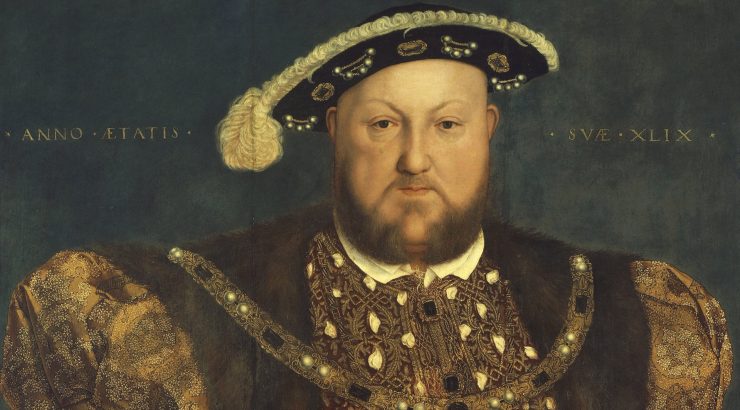How Rulers Rule with Dr. Jared Rubin Why does this matter? Why should we care how rulers maintain their power?
April 23, 2024

Dr. Jared Rubin
Who do rulers rule? Why do people follow policies enacted by political authorities? Mao Zedong famously quipped, “political power grows out of the barrel of a gun.” Sometimes this is undoubtedly true. But there are way too many historical episodes for which the explanatory power of such theories is limited. Do people in the US only follow laws because they fear jail or punishment by the police? Probably not. Instead, there are certain societal norms which most people simply do not violate. These include norms about who is the rightful holder of political power—and thus has the right to craft laws and policies.
In politics, beliefs about who has the right to rule are central to an authority’s legitimacy. In a recent paper co-authored with Avner Greif of Stanford University, we define legitimacy as “the extent that [an authority’s] subjects have internalized the beliefs that she has the right to govern, and they have the moral obligation to obey.” These beliefs differ across societies, of course. In modern democracies, winning a fair and free election is how one gains legitimacy. In a monarchy, the most legitimate claimant to the throne is typically the oldest son (or child) of the previous monarch.
Why does this matter? Why should we care how rulers maintain their power? While there are several good answers to these questions, we focus on the economic consequences. There is a very large literature in economics and political science suggesting that limited government—that is, government with checks and balances on the executive—is crucial for economic growth.When executive power is not limited the prying hand of the state tends to undermine investmentand property rights, and it doles out favors to a small cadre of supporters. These are typically not actions conducive to economic growth.
The question then becomes, why do some societies have limited government and other societies do not? This is an inherently historical question, and Greif and I answer it in the context of the nation that had the first transition to limited governance: England. There has been much debate in the social sciences regarding how and why England transitioned to a limited, constitutional monarchy. Many scholars emphasize two key events in the 17th century: the English Civil Wars of 1642-51 (fought between supporters of King Charles I and supporters of Parliament) and the Glorious Revolution of 1688 (in which King James II fled England and King William III and Queen Mary II agreed to abide by the English Constitution).
One problem with most accounts of England’s transition to limited governance is that they do not account for why those that ultimately constrained the monarch—that is, Parliament—were powerful enough to do so in the first place. In the medieval period, Parliament was an afterthought, and kings only called Parliaments when they needed money. How, then, did this organization become powerful enough to twice depose a monarch and constrain the crown thereafter?
Greif and I argue that legitimacy mattered in this transition. Specifically, the Tudor monarchs (1485-1603) had particularly weak legitimacy. The dynasty’s founder, Henry VII, won the throne on the battlefield and had a weak blood claim to the throne. His son, Henry VIII, kicked out the Catholic Church—historically one of the great legitimators of rule across Europe. Henry VIII had three children who ruled after him: Edward VI (a sickly child who died at 15) and Mary I (known to history as Bloody Mary) and Elizabeth I. Mary and Elizabeth were the first two female monarchs in English history and thus strived to legitimate their rule.
The Tudors bolstered their weak legitimacy by turning to the one group who could support their claims to the throne: Parliament. Because they had weak legitimacy, they shared rule with Parliament to a much greater extent than any monarch had in English history. Hence, by the time of Elizabeth’s death in 1603, Parliament had become an important part of English governance for over a century. This is why they were able place checks and balances on the king’s rule in the 17th century and thereafter.
There are a few key takeaways from our study. First, if we want to understand why some societies have certain political institutions and others do not, we need to dive into their histories. There is no one formula for good governance. The evolution of norms and institutions that dictate who is a legitimate ruler is an inherently historical process and is bound to differ across societies. Second, there is no “silver bullet” for a society to get “good” institutions. England’s path to constitutional monarchy was full of random events that could have changed the course of history. For instance, had Henry VIII just had a healthy boy with Catharine of Aragon and not expelled the Catholic Church, English political history would have almost certainly transpired in a much different way than it ultimately did.
One key policy implication, therefore, is that even if we know which institutions are “good” for promoting economic growth—and economists broadly agree that constrained government is good for growth—we cannot simply impose such institutions on societies. Institutions only work when the norms supporting those institutions are present—in this case, norms regarding what is legitimate rule.


